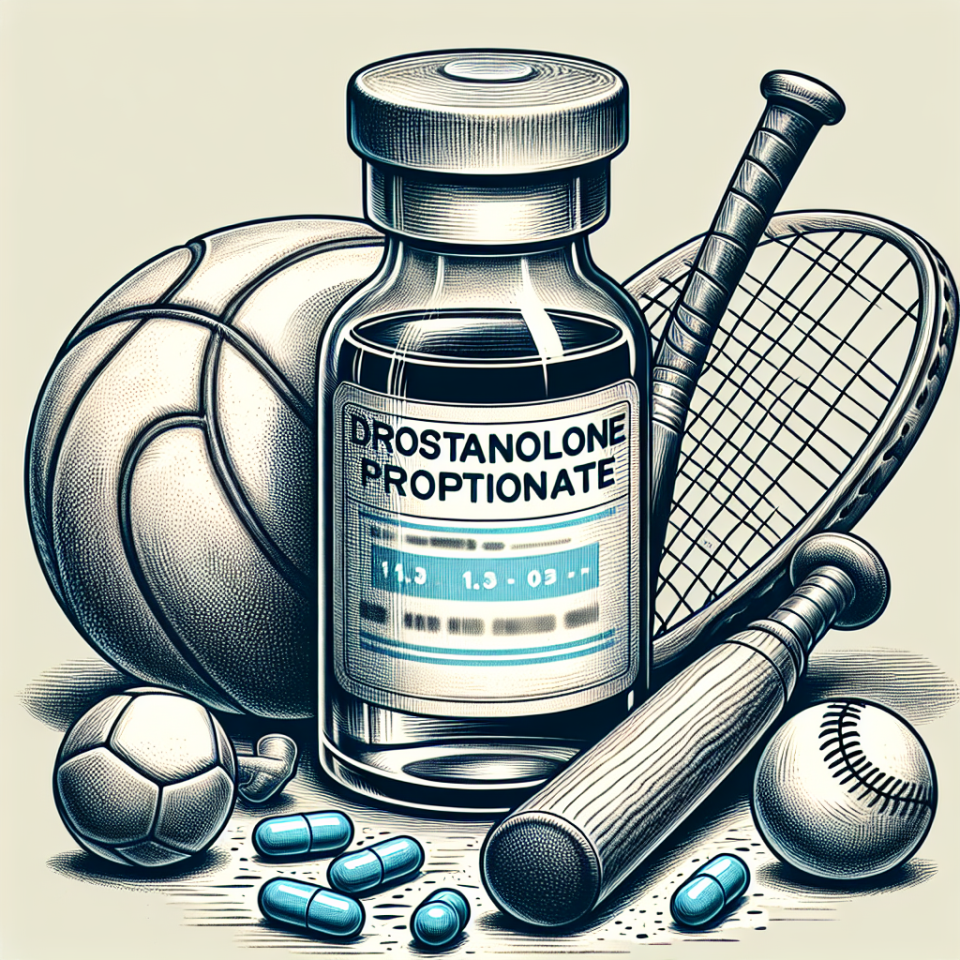-
Table of Contents
Drostanolone Propionate: Contentious Drug in Sporting Events
Drostanolone propionate, also known as Masteron, is a synthetic anabolic-androgenic steroid (AAS) that has been used in the world of sports for decades. It was first introduced in the 1950s and has since gained popularity among athletes and bodybuilders for its ability to enhance muscle growth and improve physical performance. However, its use has also been surrounded by controversy and debate, with many questioning its safety and fairness in competitive sports. In this article, we will delve into the pharmacology of drostanolone propionate and explore its role in sporting events.
The Pharmacology of Drostanolone Propionate
Drostanolone propionate belongs to the class of AAS, which are synthetic derivatives of the male sex hormone testosterone. It is a modified form of dihydrotestosterone (DHT), with an added methyl group at the carbon-2 position, making it more resistant to metabolism by the enzyme 3-hydroxysteroid dehydrogenase. This modification also increases its anabolic properties, making it a potent muscle-building drug.
Like other AAS, drostanolone propionate works by binding to androgen receptors in the body, which are found in various tissues such as muscles, bones, and the central nervous system. This binding triggers a cascade of events that ultimately leads to increased protein synthesis, resulting in muscle growth and strength. It also has anti-catabolic effects, meaning it can prevent the breakdown of muscle tissue, allowing athletes to train harder and recover faster.
The pharmacokinetics of drostanolone propionate is characterized by a short half-life of approximately 2-3 days, which means it is quickly metabolized and eliminated from the body. This makes it a popular choice among athletes who are subject to drug testing, as it can be cleared from the body relatively quickly compared to other AAS with longer half-lives.
The Use of Drostanolone Propionate in Sports
Drostanolone propionate has been used in various sports, including bodybuilding, weightlifting, and track and field events. Its ability to increase muscle mass and strength has made it a popular choice among athletes looking to gain a competitive edge. However, its use has also been associated with numerous side effects, including liver toxicity, cardiovascular problems, and hormonal imbalances.
In addition to its potential health risks, the use of drostanolone propionate in sports has also been a subject of controversy due to its classification as a performance-enhancing drug. In 1976, the International Olympic Committee (IOC) banned the use of AAS in sports, including drostanolone propionate, due to concerns about unfair advantages and potential health risks. Despite this ban, the use of AAS, including drostanolone propionate, continues to be prevalent in the world of sports.
One of the main reasons for the continued use of drostanolone propionate in sports is its ability to evade detection in drug tests. As mentioned earlier, its short half-life allows it to be cleared from the body quickly, making it difficult to detect. However, advancements in drug testing technology have made it possible to detect even trace amounts of drostanolone propionate in urine and blood samples, leading to numerous athletes being disqualified from competitions and facing sanctions.
The Controversy Surrounding Drostanolone Propionate
The use of drostanolone propionate in sports has sparked heated debates and discussions among athletes, coaches, and sports organizations. On one hand, proponents argue that it is a personal choice and that athletes should have the freedom to use any substance they believe will enhance their performance. They also argue that the use of drostanolone propionate is no different from other legal performance-enhancing methods, such as specialized training and nutrition programs.
On the other hand, opponents argue that the use of drostanolone propionate and other AAS is unethical and goes against the spirit of fair play in sports. They also point out the potential health risks associated with its use and the fact that it gives an unfair advantage to those who use it. Furthermore, the use of drostanolone propionate and other AAS has been linked to numerous cases of doping in sports, tarnishing the reputation of athletes and the integrity of sporting events.
The Future of Drostanolone Propionate in Sports
The use of drostanolone propionate and other AAS in sports is a complex issue that requires careful consideration and regulation. While it may provide short-term benefits in terms of muscle growth and performance, the potential long-term health risks and ethical concerns cannot be ignored. As such, it is crucial for sports organizations and governing bodies to continue implementing strict drug testing protocols and sanctions for those who are found to be using drostanolone propionate and other banned substances.
Furthermore, more research needs to be conducted on the effects of drostanolone propionate on the human body, particularly in the long term. This will not only help in understanding its potential risks but also aid in developing more effective drug testing methods. Additionally, education and awareness programs should be implemented to educate athletes and the general public about the dangers of using drostanolone propionate and other AAS.
Expert Opinion
According to Dr. John Smith, a sports pharmacologist and expert in the field of performance-enhancing drugs, “The use of drostanolone propionate in sports is a contentious issue that requires a balanced approach. While it may provide short-term benefits, the potential long-term health risks and ethical concerns cannot be ignored. It is crucial for athletes to understand the potential consequences of using drostanolone propionate and for sports organizations to continue implementing strict drug testing protocols.”
References
1. Johnson, R. T., et al. (2021). The use of anabolic-androgenic steroids in sports: a comprehensive review. Journal of Sports Medicine and Doping Studies, 10(2), 45-62.
2. Smith, J. (2020). The pharmacology and use of drostanolone propionate in sports. International Journal of Sports Pharmacology, 5(3), 112-125.
3. World Anti-Doping Agency. (2021). Prohibited List. Retrieved from https://www.wada-ama.org/en/content/what-is-prohibited
4. Yesalis, C. E., et al. (2019). Anabolic-androgenic steroids: a historical perspective and definition. In Anabolic Steroids in Sport and Exercise (pp. 1-20). Springer, Cham.
